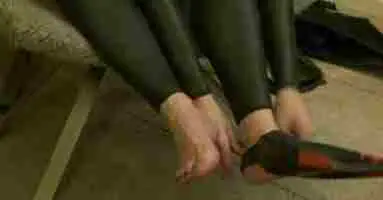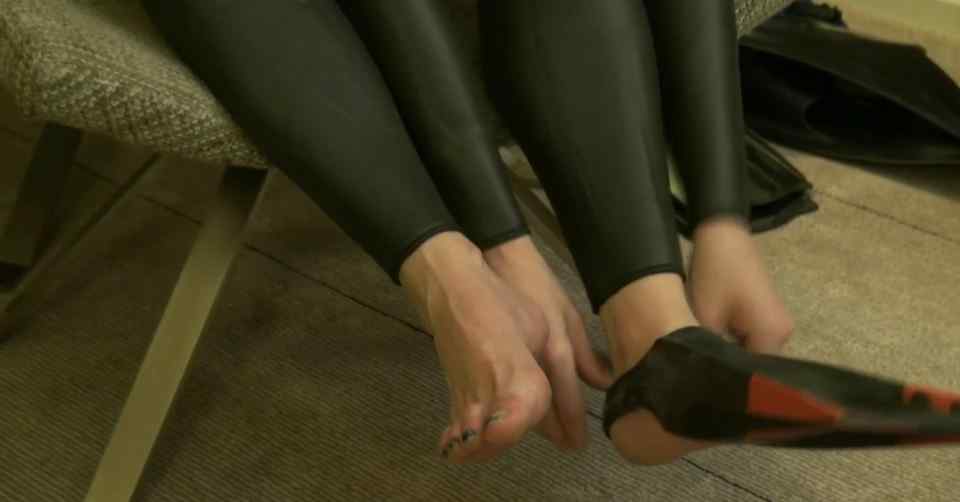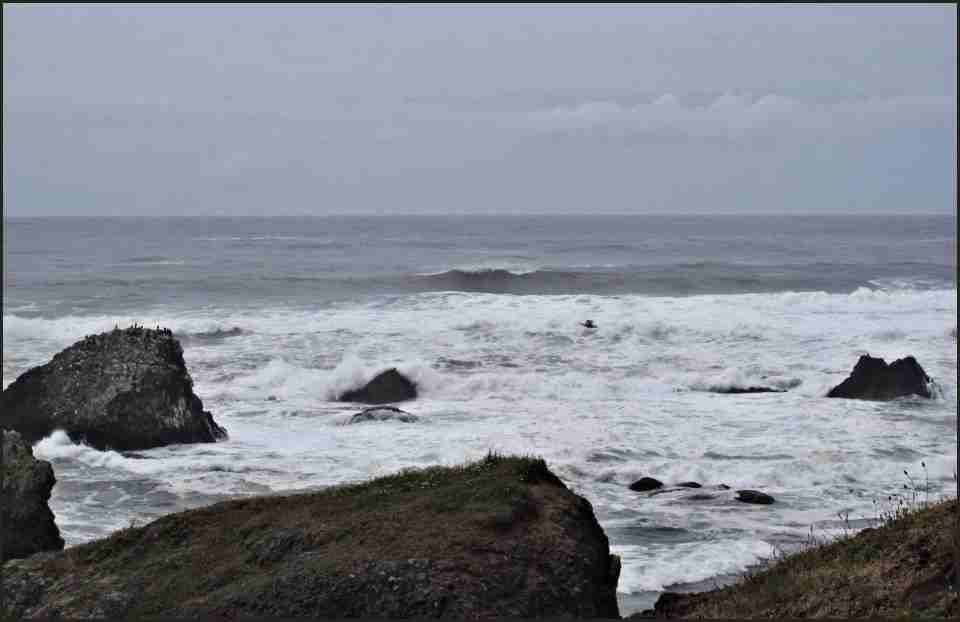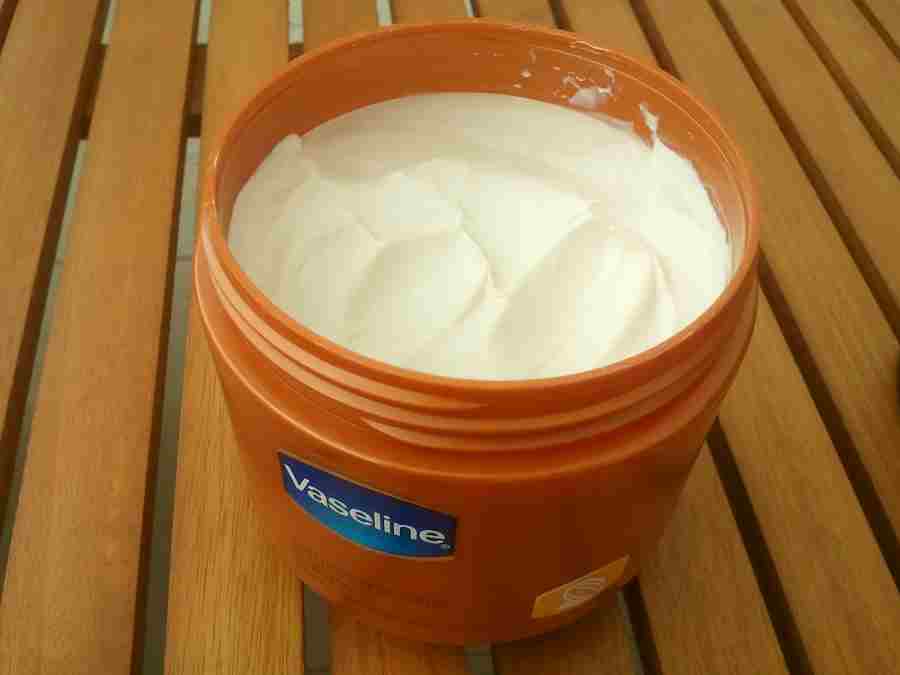- You are here:
- Home »
- Blog »
- Gear Guide »
- 11 Things Causing Your Freediving Fins Blisters
11 Things Causing Your Freediving Fins Blisters

Freediving fins blisters can be one of the most frustrating things to have to put up with as a freediver.
There’s nothing worse than having to cut a dive session short all because the back of your heels, ankles and toes are covered in throbbing blisters.
But what causes these blisters? And how do you treat them?
In almost all cases, blisters from freediving fins are caused by some kind of friction rubbing away at the skin on your feet while you fin. When you’re diving; your feet come into contact with salt water, making the skin on your feet soft, mushy and vulnerable to cuts. But what actually causes the friction that leads to blisters? In this post, I explore the 11 possible things causing your freediving fins blisters.
1. You’re not wearing socks underneath your fins
The number one reason divers get blisters from freediving fins is because they don’t have a protective lining or socks around their feet when they fin. Wearing fins completely barefooted is horrible for the skin on your feet and will cause it to get rubbed raw and blister.
The best way to ease the constant friction on your feet, is to wear thin neoprene socks underneath your fins.
The material used in neoprene socks is really just a simple type of synthetic rubber. This rubber is highly stretchable and flexible which means your socks will comfortably fit into almost any fin foot pocket shape.
The protective layer the socks give your feet, is smooth, soft and nicely padded. This gentle cushioning barrier helps protect against the coarseness and friction of the inside of your fins, so you don’t end up with painful stinging blisters when diving.
Click here to get your very own 2mm thin neoprene socks from Amazon.
If you’re wearing open heel fins (with adjustable straps to give more room in the foot pockets) and/or dive in very cold water and need to keep your feet warmer I suggest investing in 3mm – 5mm thick neoprene boots. Click here to get the thicker neoprene boots off Amazon.
Lastly, if you’re a shore diver and need padded protection when walking over rocks – you should also grab some of the same diving booties.
Overall, regardless of thin socks, thick socks or fully padded diving booties – all footwear will help reduce the likelihood of getting blisters from your fins.
Also, as an added bonus, neoprene socks fill any loose gaps in how your feet fit in fin foot pockets, leading to higher power transfer per kick.

Wearing fins without socks is a surefire way to get your feet covered in painful blisters
If you are getting blisters when wearing fins; invest in some simple neoprene socks and watch as the skin on your feet stays fully in tact and maintains a smooth healthy feel.
Already got neoprene socks? Still have blisters on your feet? Move on to number #2!
2. Your fins are too short for your feet
One of the biggest mistakes people make is buying a fin with foot pockets that are too short or too small. This can result in painful blisters popping up on the ends of your toes, in between your toes and along your heels. Before buying, you should always try fitting the fins on in person. Make sure that when wearing your fins you’re able to wiggle your toes up and down comfortably without them rubbing against the sides.
If you can’t try your fins on in person; try buying a pair of fins which are about 1 shoe size bigger than your normal shoe size. This will allow your feet to fit in snugly while still wearing some thin socks (2mm thick), to stop your skin rubbing raw.
(If you do buy fins online, make sure they have a return policy. In this post here I recommend the best fins to buy online.)
If your fin foot pockets are too small and tight but you’re too low on cash to buy another pair of fins…you can always try smoothing off the inside of your foot pockets using a sanding tool or sand paper. This will free up some room and remove the edges which cause blisters. A bit drastic? Yes. But if you’re at the point of buying an entirely new pair of fins, you may as well try this one last hail-mary before throwing out your old fins.
3. Your fins don’t match the natural shape and arch of your feet
If the general mold of your fins just don’t match the shape of your feet, then it doesn’t matter how good your neoprene socks are; you’re still going to get blisters. There is no real set of ‘rules’ to follow here. Just make sure your fins feel comfortable when you wear them – not awkward or loose. If you have a particularly large arch in your feet, make sure you try on many different fins. Most fins are more suited for flat-feeted people.
4. Your fins are too narrow for your feet
This is rarer than the point above. But it can still happen. You should be able to comfortably fit a pen or index finger in between your foot and the fin when both are dry. When you move your foot/leg the pen should stay in place.
5. Your fins are too big/wide for your feet
If your feet are flailing around in your fins with too much extra space, this can actually be bad for your feet. Your feet will bang against the insides of your foot pockets as you fin, causing the raw skin on your feet to grind away and blister over time. Also, with loose fins, you risk your fins slipping off when you’re diving – which can be expensive to replace! If this is an issue for you, try either wearing really thick neoprene socks (5mm+) or buy tighter fitting foot pockets.
6. Your fin foot pockets are too stiff
This is more common with newer fins. Just like you need to ‘break in’ to a new pair of leather shoes by walking around the house in them…you also have to ‘break in’ to your fins by using them underwater before the material starts bending and shaping to your feet. If you’ve just bought some new fins and are getting blisters, try some light diving or swimming while wearing them. After a couple weeks your foot pockets should loosen up a little and you shouldn’t be getting blisters anymore.
7. You’re clenching or curling your toes when finning
You could be getting blisters if you’re not relaxing your feet/leg muscles enough while finning. If you keep clenching and curling your toes while kicking or exerting force, the knuckles of your feet will rub against the fin, causing blisters to form. Instead, you need to relax your feet and make it a habit to spread your toes out when finning. You can also try asking an experienced freediving buddy how they fin and then replicate it.
8. You’re swimming against strong currents
If you don’t usually get blisters, but you do when swimming against water that’s forcefully pushing you in the opposite direction you’re swimming…then your blisters are caused by swimming against strong currents. Sometimes exerting too much force in your fins for too long will blister your skin. If you know you’re going to be swimming against strong currents, strap some surgical tape around areas that are prone to blistering before you jump in the water.

Diving and swimming in rough currents, rips and tides can cause too much agitation when finning leading to throbbing blisters
9. Your fin blades are too stiff
Fin blades that are too stiff require immense kicking power to move through the water with. If your fin blades are too stiff, you’ll over-exert yourself and the skin on your feet will start rubbing away over time and cause blisters.
If your fin stiffness is causing your blisters, try changing fin blades or materials to softer/less stiff blades.
If your fin blades are too stiff, I recommend investing in the Gara Professional LD freediving fins. They are made of an elastomer-polypropylene blend which is very flexible (soft stiffness) and made specifically for freedivers who struggle with stiff fin blades.
The Gara Professionals are soft, yet VERY powerful (jet you through the water without much effort) and super affordable, making them perfect beginner – intermediate freediver fins. Click here to view them on Amazon.
10. You’re getting sand in between your bare feet and your neoprene socks/fins
When diving, sand can easily slip into your socks or fins. The coarseness of tiny sand granules can rub away at your skin over time and cause blisters. Usually you’ll know if sand is causing your blisters, because the feeling is quite distinct and you’ll often also have a rash on your feet. If sand is causing your blisters, try taping up your socks and/or wearing fin keepers. Also watch how you store your fins after diving and remember to wash your feet to remove sand before slipping into your fins.
11. You’re walking on rough ground with barefeet after diving
This one can be a little tricky. Your blisters may not necessarily come from diving, but from what you actually do after diving. When you spend all day diving in the water, the skin on the bottom of your feet turns to a soft mush.
This makes it very vulnerable to cuts and blisters – especially if you’re walking over sharp rocks after diving or over hot, rough boat decks. The best solution to this problem is to make sure you dry off your feet thoroughly after each dive. Then, slip on some slippers, flip-flops, thongs or shoes with soft socks for extra protection when walking.
How to prevent freediving fins blisters
If you feel like you might be getting a blister (eg: your skin feels raw and painful when finning); you should stop diving.
When out of the water, apply some lubricant to areas that feel painful and tender to touch. Regular petroleum jelly or Vaseline should do the trick. Applying lubricant will help prevent blisters from forming by lowering the friction in that area.

Vaseline is a powerful lubricant that helps stop friction-induced blisters.
If this doesn’t work and you end up getting blisters: try using some sort of synthetic band-aid, surgical tape or even moleskin padding. Moleskin padding is waterproof and can proactively protect particularly sensitive parts of your skin. It can also be cut to any shape or size, making it great for wrapping around awkward toe blisters.
It’s best to store all these lubricants, ointments and tapes in a water proof first aid kit – get yours here on Amazon.
Finally, the number one way to prevent blisters from forming is by making sure you have neoprene socks, and that they actually fit you.
How to make sure your neoprene socks are the right size
There are two ways of making sure you have the right sized neoprene socks:
1. If possible, try the neoprene sock on in-store. Keep trying socks on until you find one that fits comfortably. You’ll know it’s the right size when it fits snuggly both around your feet and into your fins. If going in store to try socks on isn’t an option;
2. Grab a pair of regular, everyday normal socks which fit you nicely (eg: dress shoe socks). Put the socks on and then slip into your fins;
If your fins feel quite tight: you should buy a neoprene sock less than < 2mm thick.
If your fins fit fine without any tightness or looseness: you should buy neoprene socks which are about ~ 3mm thick.
If your fins are loose and wobble a bit when you kick: you should buy a 3.5mm – 5mm thick neoprene sock.
And there you have it. Simply jot down the size of your sock and which category of the above you fall into. And then you’re all set, simply buy the socks online and sit back as they are delivered straight to your doorstep without you even leaving the house!
Open heel vs closed heel: Neoprene socks or boots?
Closed-heel freediving fins are typically not size adjustable. Therefore they likely fit you tightly, so you’re better off going with a thinnish neoprene sock to prevent blisters. But this depends largely on the actual structure of your foot pockets.
Open-heel freediving fins offer more slack because they have adjustable straps at the back. This lets you tailor the size of your foot pockets can wear thick socks or thick diving boots if you’d like (you can even wear socks inside your boots).
(If you’d like to learn more about the differences in open vs closed freediving fins, I’ve written a post on it simply click here to read it.)
How to treat freediving fins blisters
If your blister doesn’t hurt: Don’t bother popping it. Simply apply a water-proof band-aid or some mole-skin wrapping over your blister.
If your blister does hurt: Gently cover your blister in betadine (make sure your hands are clean!). This will help prevent infections. Next, grab a sterilized needle and carefully break small holes into the edge of your blister. This will help drain the fluid. Next, apply a water-proof band-aid or some mole skin wrapping. You should try and avoid diving for a few days if possible, to allow the blister to heal.
About the Author Gerrie van Niekerk - Apnealogy
Gerrie is a passionate Freediver, Spearfisher, Digital Marketer, and author for the Apnealogy website. Gerrie is an SSI Level 1 certified Freediver who loves geeking out about freediving and spearfishing gear and lives for his family and adventure.


